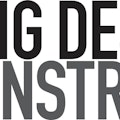In the age of data-driven design, has POE’s time finally come?
When Steven Holl’s iconic Simmons Hall opened on the campus of the Massachusetts Institute of Technology some 15 years ago, the building’s provocative design—which earned it the nicknames “the sponge” and “the space waffle”—and quirky amenities sparked a series of scathing first- and second-hand accounts about what it was like to be one of the 344 residents of the porous, blocky structure.
The building’s 3,000+ small operable windows were difficult to open and required occupants to close as many as nine shades every night for complete privacy. The metal window screens acted as a Faraday shield, blocking cell-phone signals. The modular furniture allowed residents to customize their rooms, but only once a year, during move-in. The building’s curving walls and bulging ceilings made for less-than-desirable setups in certain rooms.
It was the kind of brutally honest “customer” feedback that is commonplace in today’s Yelp and TripAdvisor society, but was scarce in the early 2000s. It took the right building type (dorm living), at the right university (research-focused MIT), with the right occupants (academically elite students eager to join the “sponge” experiment), to elicit such a response. (In Holl’s defense, there was plenty of positive feedback from occupants, and Simmons Hall has since matured to become largely beloved by MIT students.)
At a time when research- and data-based methods are playing a larger role in architecture—from computational design to machine learning to the use of beacons for data collection—there remains a surprisingly scant amount of post-occupancy research on newly built or renovated buildings. But that’s starting to change.
FKP/CannonDesign, HDR, HMFH Architects, HOK, KieranTimberlake, Perkins Eastman, and Perkins+Will are among the growing list of firms with formal or informal POE initiatives. In the last year alone, Perkins Eastman has published two POE reports—one on a high-performance school in Cambridge, Mass. (BDCnetwork.com/PEpoe1), the other on a healthcare research center in New York (BDCnetwork.com/PEpoe).
In 2015, HMFH commissioned a research firm to conduct a POE study of three K-12 schools the firm designed. The resulting 97-page report provided a host of lessons for the firm’s designers (BDCnetwork.com/HMFHpoe).
Co-working space provider WeWork is performing some of the most advanced POE research, with its machine learning-based analysis of feedback from its tenants worldwide (BDCnetwork.com/WeWorkpoe).
For decades, design firms buried their head in the sand when it came to evaluating the performance of their work. Clients weren’t asking for POE research, nor were they willing to pay for it. But with the rise of data-driven design and the proliferation of occupant-focused movements like Well and Fitwel, those days are coming to an end.

